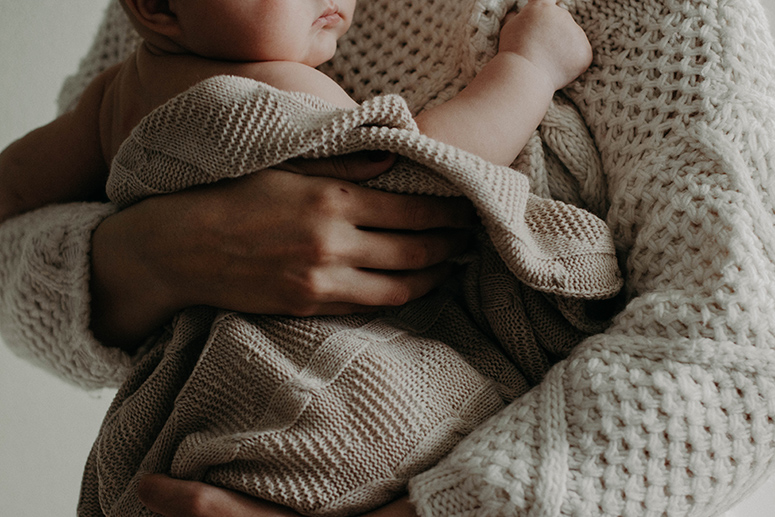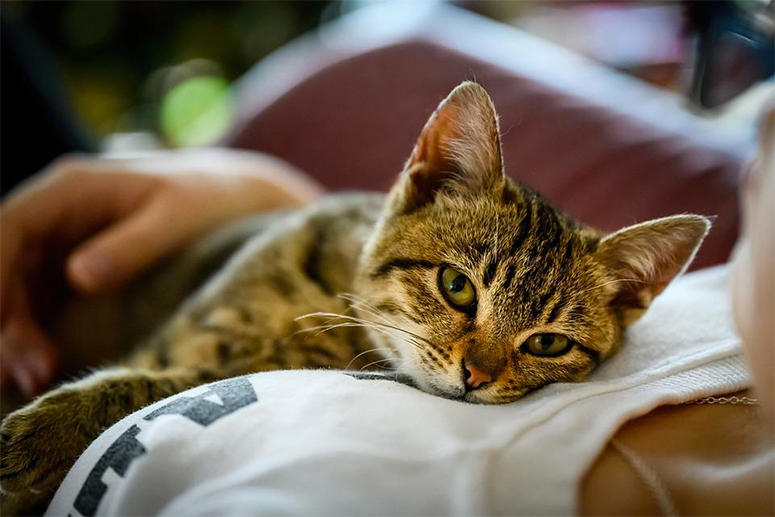Physical touch: Why it matters and how starved are we?
The artist Michelangelo once said, “To touch can be to give life.”
As it turns out, the brilliant Renaissance artist was spot-on back in the 16th century, after the completion of one of his many masterpieces. But let’s face it: the last 24 months have been anything but conducive to any type of human touch. Quite the opposite.
Being isolated from the outside world has made many of us feel physically and emotionally disconnected. Basic handshakes were dropped and replaced by fist and elbow bumps; and hugs, well, those were borderline illegal. Even now that things are slowly going back to normal, people are still quite guarded, careful and paranoid when someone gets too close to what we consider our personal space. Are we losing the need for physical closeness?
Touch is considered a universal language and every culture has its own way of “speaking” it. Before moving to the Philippines, I spent my early years in Colombia where physical contact is part of our DNA. The way we talk, the way we dance, the way we love and express our emotions is mostly through touch. Even in touch-deprived cultures, touching is no less important than in tactile ones. Not being able to touch one another was a big challenge during the pandemic.

A pat on the back, a caress on the arm or an old-fashioned hug are daily gestures we usually take for granted, thanks to our dexterous hands. But these gestures are far more profound than we think: they are our primary language to express compassion.
Studies suggests that touch is fundamental to human communication, bonding, health, and, in fact, survival. Ines Varela-Silva, a senior lecturer in Human Biology at Loughborough University in the UK, studied the physical and psychological harm that happens in orphanages. She recounts her own personal story: “I taught myself about orphanages 17 years ago, because of my daughter. She was born in 2004 and her first 14 months of life were spent in an orphanage in China,” she recounts. “I am well acquainted with the vast body of research that shows the physical and psychological harms of deprived environments. Orphanages can arguably be placed under this category. Deprivation comes in many shapes and forms: lack of food, disease, maltreatment and child abuse are some of the harms that come to mind. However, I would argue that deprivation of love and human touch can be just as deadly.”
Touch deprivation is correlated with negative health outcomes such as anxiety, depression and immune system disorders.
From the moment we are born, we are innately attuned to touch. Skin-to-skin contact between a mother and her baby provides a wide array of benefits for both. It regulates a baby’s temperature, heart rate and breathing, as well as enhanced nutrient absorption, improved brain development and better sleep. As for the mother, she experiences an increase in relaxation hormones, lowering her risk of postpartum depression.
But the benefits of human touch last far beyond childbirth. Throughout our lives a whole range of psychological and biochemical reactions happen when we touch someone and someone touches us, and despite the advantages of digital advancement it is vital to preserve human touch in order for us to truly thrive.

Regrettably, many western cultures are touch-deprived and ethnologists worldwide are quick to recognize this. Touch deprivation is correlated with negative health outcomes such as anxiety, depression and immune system disorders. Of course, there are plenty of reasons why people are inclined to keep their hands to themselves, especially in the litigious world we live in, but research has revealed that we lose much when we radically hold back our tactile capacity.
The medicinal effects of touch
Touch is known to calm our nervous center, slow down our heartbeat and lower our blood pressure.
Our skin, which makes up 20 percent of our bodies, is our largest and most sensitive organ. An area the size of a 20-centavo coin contains approximately 50 nerve endings and three feet of blood vessels.

Studies using PET scans have found that “the brain quiets in response to stress when a person’s hand is held. The effect is greatest when the hand being held if that of a loved one, but it still works even if it is just a stranger.” (Field 2010) Even our immune response seems to be somehow governed by touch, with findings that those who are deprived are more likely to suffer from immune system diseases. Ironically, during this pandemic, that was the exact thing that we needed to avoid, which made this world health crisis exponentially worse.
Touch is the sense we take most for granted, but we miss it when it’s gone. Psychologists have a specific term for the feeling of deprivation and abandonment we experience; they call it “skin hunger.”
Proper use of touch has the potential to transform the practice of medicine. For example, medical surveys show that touching patients with Alzheimer’s disease can have enormous effects on getting them to relax, connect with others and reduce depression symptoms. Touch can also be used as a therapeutic way to reach children with autism, who are usually believed to hate being touched. The contrary has been proven.
It’s mind-blowing to think what a hug can ignite in our body:
- Stimulation of the vagus nerve, helping us slow down our nervous system.
- Lowering of cortisol levels to balance out our stress hormones.
- Increasing serotonin, the body’s natural anti-depressant and pain reliever, keeping us happier and stabilizing our moods.
- Raising our levels of oxytocin, also known as the “love hormone,” to make us feel connected and socially bonded with others.
- Improving sleep and reducing stress; the benefits of co-sleeping with your small children or cuddling with your partner are known to regulate your sleep, reduce stress and lower levels of anxiety.
Here are five other important reasons why we need human touch more than ever:
- To create stronger trust between individuals. Touch helps to bond and bring people together. Neuroscientist Edmund Ross found that touch activates the brain’s orbitofrontal cortex, linked to feelings of reward and compassion. Often people are able to communicate a wider range of emotions through touch than through words.
- To incite greater learning engagement. Studies show that when teachers pat students in a friendly way, those students are three times as likely to participate, speak up in class and feel encouraged to study harder and do better in school.
- To decrease violence. This supports the notion that less physical affection (or more physical neglect) can contribute to greater aggression. The critical need for physical affection is highlighted by a study done on 49 cultures (Prescott, 1990). It demonstrated that “the cultures that exhibited minimal physical affection toward their young children had significantly higher rates of adult violence, and vice versa. Those cultures that showed significant amounts of physical affection toward their young children had virtually no adult violence.”
- To diminish disease and build a stronger immune system. Research at the University of California’s School of Public Health found that receiving eye contact or a pat on the back from a doctor may boost the survival rate of patients with complex diseases. Physical touch may also decrease disease.
- To create stronger team dynamics. Paul Zak, author of The Moral Molecule, argues, “We touch to initiate and sustain cooperation.” He conducted a “neuroeconomics” study confirming that hugs or handshakes are likely to cause the release of the neurochemical oxytocin, which increases the chances that a person will treat you “like family” even it you just met. A report published in the Journal Emotion found that world-famous basketball teams in the NBA whose players pat, “high-five” and touch each other, win more games.
How to increase touch in your life
Given its obvious importance, one question to ask is: how do we introduce more touch into our lives?

It makes sense to think up ways to incorporate touch into different forms of therapy. Let’s look at a few:
- Massage. One of the most effective ways is through massage therapies. By touching and moving the skin you stimulate pressure receptors that send neurons to your vagus nerve. This nerve helps slow down the central nervous system, putting your body in a resting state and lowering the stress hormone cortisol. Self-massage in an electronic chair or with a foam roller is an option if you prefer not to expose yourself to another person.
- Reflexology. Your feet are extremely receptive to touch. There are over 7,000 nerve endings in each foot. The sensory information from your feet not only protects from injury, the nerve impulses received by your brain in turn will send messages to your muscles, making subtle adjustments in your gait, protecting bones and joints.
- Spending time with pets. Our pets can help prevent or reduce issues related to touch starvation without compromising virus-safety protocols. Companion animals, such as dogs, cats, and even horses are an excellent mechanism for soothing the symptoms of touch starvation.
- Weighted blankets. Deep-touch pressure (DTP) benefits have been known for decades, with research linking deep-touch pressure therapy to lower anxiety levels, reduced stress, better sleep, and improved overall mental health. Weighted blankets draw on the fundamental science of deep-touch pressure to bring about these benefits. While it can never replace hugging our loved ones, it can help avoid some of the harmful side effects of touch starvation.
- Maintenance self-care therapies. Manicures, pedicures, hot oil treatments, a simple shampoo and blow dry are all done by people who touch and take care of you. Your body will feel and interpret the warmth of another human being’s touch as love and affection and you will feel uplifted and happy.
Other sources of human touch happen when you work with a physical trainer, get yourself adjusted by a chiropractor or aligned by a yoga teacher.

So now that we are relatively safe, look around you. This doesn’t mean you should turn around and grope your neighbor or invade the personal space of everyone around you. But it incites you to be kind with your words, give tight handshakes and be generous with your hugs. Everyone is carrying some type of sadness, heartbreak or fear that they don’t show or talk about and you can help their healing process by showing some type of physical affection.
Compassion is literally at your fingertips. When people are starved for touch, the slightest forms of contact become filled with meaning. To deny that is to deprive ourselves of some of life’s greatest joys and deepest comforts.
As Joe Moran, the author of If You Should Fail, wrote: “We are meant to hold people close, feel the bones in their back, the rise and fall of their chests and remind each other that we are warm bodies still breathing, still alive.”


